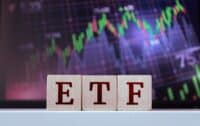 The Federal Reserve seemed to abandon its independence at the start of the credit crisis.
The Federal Reserve seemed to abandon its independence at the start of the credit crisis.
Ben Bernanke and then-Treasury chief Henry Paulson worked arm-in-arm to combat a collapse in the US bank system. The New York Fed seemed at times to be an appendage of the Treasury Department when AIG (NYSE: AIG) needed a rapid bailout. The Fed was later criticized for its role because some felt its due diligence of the AIG books was too hasty. In reality, there was probably no time for a thorough review as the insurer began to rapidly collapse under it own weight.
The financial crisis also brought on Federal Reserve “open window” policies to give large American banks short-term loans in exchange for assets of very questionable value.
The central bank then came under pressure to change the way it audited its own books as Ron Paul and other members of Congress threatened to have outside auditors review the Fed balance sheet and report on what was discovered. Bernanke was forced to defend the Fed’s practices of confidentiality which was essential to some of its activity. The Fed has also watched its mandate change as a result of its newly established role in financial reform
The Federal Reserve has finally begun to take back its independence and separate itself from the whims of partisan politics.
A number of economists and “political strategists” sent Ben Bernanke a letter in which they said
We believe the Federal Reserve’s large-scale asset purchase plan (so-called “quantitative easing”) should be reconsidered and discontinued. We do not believe such a plan is necessary or advisable under current circumstances. The planned asset purchases risk currency debasement and inflation, and we do not think they will achieve the Fed’s objective of promoting employment.
Whether the communication was partisan or not can be left open to interpretation. The note was signed by a number of conservatives who would appear to be aligned with the Republican party, but that is academic.
The Fed will ignore the letter, much as it has other messages of support or criticism of its QE2 plan. The central bank has charted its own course based on the independent decisions of its own governors, and such a decision is critical to the preservation of the Fed’s history of independence. Some Fed governors and regional presidents have criticized QE2, but none has said the Fed’s decision is not within its rights.
The Fed has finally begun to take back its right to make monetary policy without being tethered to its friends or foes. That fulfills its decades-long mandate which is as it should be.
Douglas A. McIntyre
It’s Your Money, Your Future—Own It (sponsor)
Retirement can be daunting, but it doesn’t need to be.
Imagine having an expert in your corner to help you with your financial goals. Someone to help you determine if you’re ahead, behind, or right on track. With SmartAsset, that’s not just a dream—it’s reality. This free tool connects you with pre-screened financial advisors who work in your best interests. It’s quick, it’s easy, so take the leap today and start planning smarter!
Don’t waste another minute; get started right here and help your retirement dreams become a retirement reality.
Thank you for reading! Have some feedback for us?
Contact the 24/7 Wall St. editorial team.





